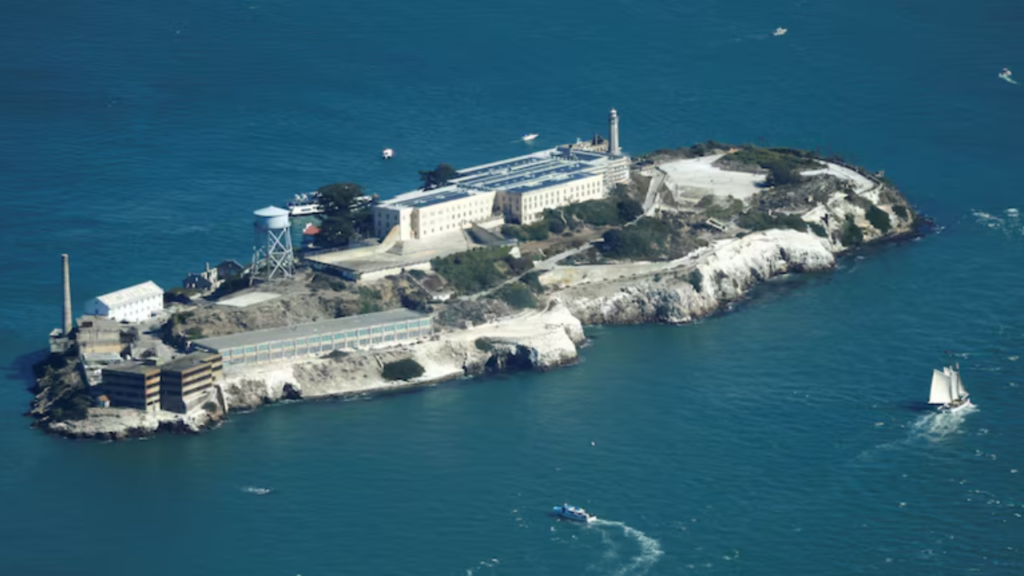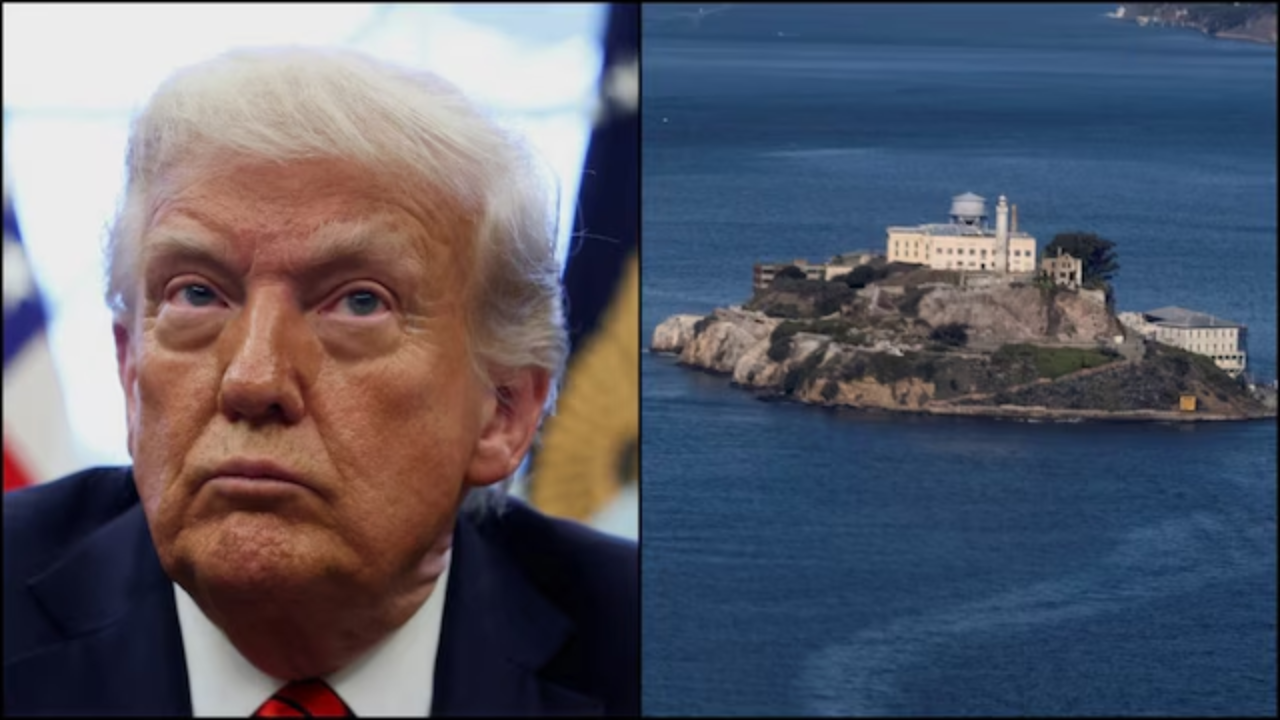Former President Donald Trump has announced his intention to reopen Alcatraz Island as a federal prison, reviving one of the most iconic symbols of American incarceration. The declaration, made via Trump’s Truth Social platform on Monday, calls for the facility to house what he described as “America’s most ruthless and violent criminals.”
“Alcatraz will once again serve as a fortress of law, order, and justice,” Trump wrote. “No more coddling violent thugs. We’re putting them where they belong in the rock.”
Alcatraz Federal Penitentiary, which operated from 1934 to 1963, is known worldwide for housing infamous criminals such as Al Capone and George “Machine Gun” Kelly. Located on a rocky island in the middle of San Francisco Bay, it was renowned for its high security, isolation, and reputation for being inescapable.
The prison was shuttered in 1963 by the federal government due to deteriorating infrastructure and high maintenance costs. Since then, it has been managed by the National Park Service (NPS) as a tourist attraction, drawing over 1.2 million visitors annually.
Federal Agencies Directed to Plan Reopening
In his post, Trump called on several federal agencies to take action, including the Federal Bureau of Prisons (BOP), Department of Justice (DOJ), Federal Bureau of Investigation (FBI), and Department of Homeland Security (DHS). The proposal, however, does not appear in the form of a formal executive order on any government portal, and it is unclear whether any official planning is underway.
“Criminal illegal aliens, gang members, cartel leaders, and repeat offenders are laughing at our soft justice system,” Trump stated. “We’re done being soft. If the judges won’t deport them, we’ll lock them up on the rock.”
Trump also floated the idea of using Alcatraz to detain undocumented immigrants with criminal records a proposal that immediately sparked legal and ethical concerns among immigration advocates and lawmakers.
Backlash from California Officials and Historians
The announcement has drawn swift criticism from San Francisco leaders and state officials.
“This is unserious and absurd,” said Speaker Emerita Nancy Pelosi. “Alcatraz is a national historic site and a vital economic and cultural asset to our city. Turning it into a prison again would be regressive and destructive.”
California State Senator Scott Wiener echoed the sentiment, calling the idea “a political stunt that ignores reality.”
Local historians and park experts were quick to point out the impracticality of the plan. John Martini, a former National Park Service ranger and expert on Alcatraz, warned that much of the island’s infrastructure is over a century old and structurally unsound.
“There’s no fresh water on the island, no functioning sewage system, and most of the buildings are uninhabitable,” Martini said in an interview with the San Francisco Chronicle. “Rebuilding the prison would cost billions, and that’s before factoring in the environmental and historical preservation issues.”

Legal and Logistical Challenges
Reopening Alcatraz would likely require congressional approval, given that the land is part of the Golden Gate National Recreation Area (GGNRA), and protected under federal law. Environmental and preservation groups are also expected to challenge any such move in court.
The Environmental Protection Agency (EPA) would likely need to be involved in any large-scale infrastructure redevelopment on the island, due to its location in a sensitive marine ecosystem. Rebuilding utilities alone—such as water, power, and sewage—would be a monumental logistical undertaking.
Experts also point out that modern correctional philosophy has largely moved away from isolating prisoners in extreme environments like Alcatraz, focusing instead on rehabilitation, reentry programs, and reducing recidivism.
No Official White House Statement
As of this writing, there has been no mention of the proposal on the official White House website, nor any confirmation from the DOJ or BOP about any plans to reoccupy Alcatraz.
It remains unclear whether Trump, who is currently campaigning for reelection in 2026, intends the proposal as a serious policy initiative or a symbolic gesture aimed at reinforcing his tough-on-crime image.
A Symbolic Move or Policy Shift?
Trump has a history of invoking high-profile symbols to advance his political platform. Reopening Alcatraz fits squarely into his rhetoric of “law and order,” a theme central to his previous campaigns and current public messaging.
However, many analysts question the feasibility and legality of such a move.
“If this were just about symbolism, it might work,” said political analyst Maria Estrada. “But turning a historic monument into a detention center again, in today’s political climate, is likely to face insurmountable resistance.”
Conclusion
For now, Alcatraz remains a popular tourist destination and a reminder of America’s penal past. Whether it will once again become a place of incarceration depends on far more than a single social media post — it would require legal, environmental, logistical, and political hurdles to be cleared.
In the meantime, critics and supporters alike are left questioning whether the “Rock” will truly rise again — or if this is simply another chapter in a long-running campaign of political theater.

Pankaj Kumar is a skilled content writer at OTE News, focusing on breaking news, technology, and socio-political developments. With a background in Mass Communication, he brings a balanced perspective to his articles, ensuring clarity and reliability. Pankaj has a knack for simplifying complex topics for readers.
In his free time, he enjoys photography, traveling, and experimenting with new cuisines. His curiosity and dedication to truthful reporting make him a valuable contributor to OTE News.



